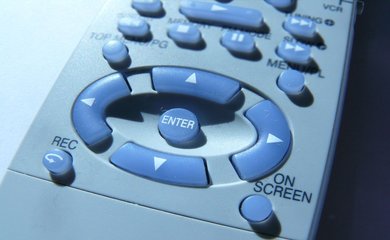ABC Family’s Switched at Birth has already been making television history with the heavily integrated use of American Sign Language (ASL) in its episodes; revolving around the lives of Deaf, hard of hearing, and hearing people, the show includes scenes set in a Deaf high school and frequently includes entirely ASL dialogue between characters. It forces a new perspective on viewers in a way that feels organic and natural to the text, rather than heavy-handed. This is a show that celebrates Deaf culture, Deaf pride, and Deaf community.
This week, the show took it even further, and made television history with an all-ASL episode, opened with an announcement that ‘there’s nothing wrong with your TV’ to warn viewers that yes, the low sound was intentional. While there was some spoken dialogue at the beginning and at the very end, the episode was otherwise entirely shot in ASL as we watched the characters protest the proposed closure of their unique high school, which would have forced them into mainstream school.
As the only all-ASL primetime TV episode in history, ‘Uprising’ would have been astounding for that alone, and the media are abuzz with talk over the ‘silent’ episode. (Strictly speaking, it wasn’t entirely silent, as it featured some background noise as well as, unfortunately, music; I would have preferred to watch it in true silence and considered turning the sound off altogether, something I’d recommend for those who haven’t seen the episode yet.) As Marlee Matlin as Melody, the school’s guidance counselor, put it, hearing people won’t understand Deaf life until they walk in their shoes, and ‘Uprising’ offered a chance to do that.
Like ABC Family’s other offerings, Switched at Birth is definitely going for the uplifting moral tale couched in wholesome though often surprisingly progressive family values angle, so it would seem easy for it to slip into an inspiring narrative about disability and deafness. However, it manages to avoid that, in no small part I suspect because of the large number of D/deaf and hard of hearing members in the cast, who keep the show feeling authentic, real, and true to the communities it depicts, even as it also depicts some of the tensions within the D/deaf community and the gap between D/deaf and hearing people.
In the case of ‘Uprising,’ which commemorates the Deaf President Now movement at Gallaudet with its own school takeover, the episode highlighted organization and advocacy in the Deaf community, while also giving a nod to hard of hearing and hearing allies, depicting a balancing act as characters negotiated their own identities and relationships. This was particularly stark in the case of Bay (Vanessa Marano), a hearing student attending Carlton School for the Deaf as part of a pilot program, who fights to save the school even as Deaf students argue that the school should be all-Deaf, excluding students like her.
The episode also provided a small taste of the Deaf experience, something stars like Marlee Matlin were excited about; for example, the lack of sound meant that viewers missed the same audio cues the characters did. We didn’t hear an alarm going off in one scene, for example, nor did we hear approaching police cars coming to break up the student protest. The effect put viewers at a disadvantage, something the show has illustrated at other points in the series when it’s shown D/deaf characters made vulnerable, but hasn’t brought home for viewers by making us share the experience.
This was not, however, an offering meant to tragedise the Deaf experience; on the contrary, it celebrated Deaf culture and heritage, and highlighted, as the show has done over the course of its run, the beauty and elegance of ASL. Many hearing people mistakenly view ASL as simply a form of English, but it’s a language in its own right, with its own grammar, syntax, and norms, including very expressive facial and body gestures made famous by interpreter Lydia Callis when she appeared at Michael Bloomberg’s side during Sandy press conferences.
To see the beauty of ASL openly used and celebrated on mainstream, primetime television, and on a very popular show to boot, is amazing, and it illustrates how far we’ve come culturally. For viewers to be exposed to a celebration of Deaf culture is to challenge norms about Deafness, disability, and society; for D/deaf and hard of hearing viewers, of course, this episode marked a departure from the usual offerings of television, which center very much around auditory cues. So much so, in fact, that despite legal requirements, captioning still isn’t available on a lot of online content.
And for hearing viewers, Switched at Birth offered a glimpse into another world for an hour. It wasn’t intended to provide a complete picture, but it did provide insights into things hearing viewers may not have thought about, while still avoiding the temptation of slipping into troped statements about Deafness.
Representations of disability in pop culture are hard to find (and many members of the Deaf community don’t identify as disabled, which should be noted). Good representations of disability—or diversity—are even harder still. What Switched at Birth does, and did to particularly great effect on Monday, isn’t just show viewers a slice of Deaf culture. The show also normalises the D/deaf and hard of hearing community, breaking down fear, stigma, and confusion among hearing people.
While elements of the episode smacked of the Very Special Episode, the core mission of the show is to tell a story. A story in which some of the characters happen to be Deaf, and therefore their Deafness comes up within the story when it’s contextually appropriate. This is the kind of television we need to be seeing more of to bridge the gap not just between the D/deaf and hard of hearing and hearing communities, but also between the disabled and nondisabled communities.
We really are just like you; we go to school, we rap, we drink beer in high school, we protest, we love.

